Welcome to Potosí, world’s biggest, richest and highest city. Okay, currently only the latter is still true. When soon after the conquest of South-America the Spanish discovered a silver deposit in Cerro Rico, the new founded city of Potosí soon developed to one of the most important places of the world. “Vale un Potosí” is still today a Spanish expression for being worth a million. The density of silver in the mountain was so high that in the beginning it was possible to melt the silver directly out of the stones. Lots of Indios had to work in the mines, the silver was sent to Spain with the famous silver fleet and provoked an inflation in Iberia.
Nowadays the past glorious vanished but what remained is Cerro Rico. Potosí continues to be a mine town with 15000 workers entering the mines every day and producing 5000 tons of stones per day. However, since silver is not abundant anymore, a complex chemical process is needed to get the minerals (silver, plumb and zinc) out of the stones. As mercury is necessary for this process, all the water in the area is contaminated and the working conditions are not any better: We did a mining tour which even though is attended by many tourists is surprisingly somehow non touristic. There are no special trails for visitors but you have to climb the same narrow tracks like the miners and you see them during their everyday work. They spend 12 hours under the earth and often sleep the rest of their time in cold and wet mud huts at the entrance of the mine at more than 4000m of altitude. Due to the humidity, they cannot bring any food inside so they work all day without eating and additionally it is not possible to go to the toilet because of the ventilation system. The solution like so often in the Andes: chewing coca leaves which dampens the feeling of hunger and improves the oxygen transportation. With the huge amount of coca in their mouth, they work in a hot and super-dusty environment, usually getting asthma after a couple of years. On the small paths we had problems getting down, they climb up with bags full of stones weighting more than 40 kilos – unbelievable, we could hardly lift them up. Enduring all these strains, they win between 800 and 1200 Bolivianos per month on average. This is between 90 and 130 €.
For those workers who are organized in cooperatives and work on own risk, the salary is extremely variable. Depending on the quality of the minerals that you find in your claim, you can earn between 1 and 1000 US$. To support their luck, the miners are extremely superstitious and offer sacrifices to the Pachamama (Mother Earth) and to the Tío (Mine God). Moreover, they drink nearly pure alcohol before entering the mine to find pure minerals in it. Of course this work is extremely hard, but when you are in the mine, you talk and joke with the miners and experience their every day life – feeling pity is not the first thing you have in mind then. After all, we were still happy to leave the mine after about 2 hours: tired, dirty and with a strange feeling in your lungs.
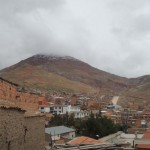
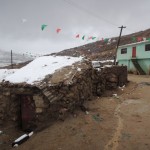
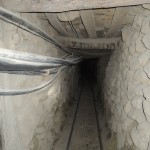
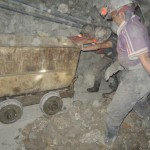
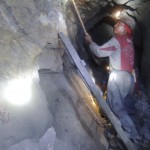
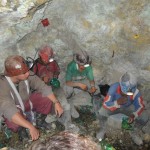
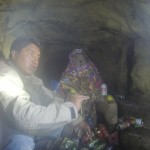
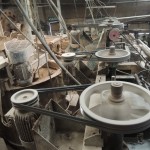
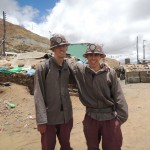
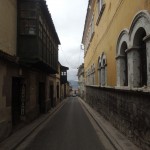
Wir waren nach dem Aufenthalt in La Paz in Potosí, ehemals die größte und wichtigste Stadt der Welt, dank ihrer extrem hohen Silbervorkommen Afang des 16. Jh, die die Spanier wenigstens für einige Jahre reich machten.
Heute ist die Stadt weit weniger glänzend, 15000 Arbeiter fahren noch immer täglich in die Miene und fördern Blei, Silber und Zink. Man begeht bei einer Tour alle Wege, die die Arbeiter auch benutzen, einen extra Touripfad gibt es nicht. Dabei lernt man die harten Arbeitsbedingungen der Arbeiter kennen: Die engen Pfade winden sie sich mit rund 40kg schweren Rucksäcken mit Gestein hinauf, es ist heiß und stickig und nach einigen Jahren haben die meisten Asthma. Essen ist nicht möglich, da Nahrung in der hohen Feuchtigkeit in kurzer Zeit schlecht wird, auch ist ein Gang zur Toilette wegen des Belüftungssystems nicht drin. Deshalb sind die Arbeiter eigentlich immer am Koka-Kauen, von diesen Blättern werden rauhe Mengen verzehrt. Die Schicht dauert 12 Stunden, zwischendrin wird in armseligen, kalten Lehmhütten am Engang der Mine übernachtet. Lohn für die Anstrengung: 90 bis 130 Euro im Monat.
Da einige Arbeiter auf eigene Rechnung arbeiten, ist ihr Lohn extrem variabel: Um ihrem Glück nachzuhelfen opfern sie dem Berggott “el tío” und trinken reinen Alkohol vor dem Gang in die Mine, schließlich wollen sie ja auch auf reine Mineraladern stoßen. Unter Tage ist die Stimmung der Arbeiter aber besser, als die Arbeitsbedingungen nahelegen würden, schließlich ist das für die Mineros (harter) Alltag. Wir waren jedenfalls froh, die Mine nach 2 Stunden wieder verlassen zu können.
Voilà un article d’une nature bien différente que tes précédents articles — mais pas moins intéressant, au contraire même. Les être humains n’ont pas tous tiré le même lot lors de la distribution des prix… …